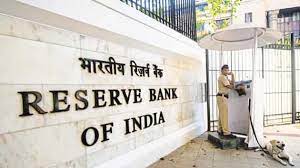Growth in contingent liabilities of SCBs decelerated at end-March 2024, led by forward exchange contracts, as per the Reserve Bank of India’s “Report on Trend and Progress of Banking in India 2023-24”

FinTech BizNews Service
Mumbai, 26 December, 2024: During 2023-24, the consolidated balance sheet of commercial banks in India remained robust, marked by sustained expansion in both credit and deposits, says The Reserve Bank of India’s “Report on Trend and Progress of Banking in India 2023-24”, released today.
Asset quality indicated gains across all bank groups. Capital and liquidity buffers remained well above regulatory requirements and profitability exhibited improvement for the sixth consecutive year.
The Indian commercial banking sector exhibited sustained strength during 2023-24 and H1: 2024-25. The consolidated balance sheet of scheduled commercial banks (SCBs) underwent double-digit expansion, led by robust credit growth. Banks’ profitability rose for the sixth consecutive year and asset quality improved further with the gross non-performing assets (GNPA) ratio falling to its lowest in 13 years at 2.7 per cent at end-March 2024. Banks’ capital position remained satisfactory as reflected in their leverage and capital to risk weighted assets ratios (CRAR). All bank groups met regulatory requirements related to liquidity while maintaining high provision coverage ratios (PCRs).
Balance Sheet Analysis
At end-March 2024, India’s commercial banking sector consisted of 12 public sector banks (PSBs), 21 private sector banks (PVBs), 45 foreign banks (FBs), 12 SFBs, six PBs, 43 RRBs, and two LABs. Out of these 141 commercial banks, 137 were classified as scheduled banks, while four were non-scheduled.
The consolidated balance sheet of SCBs, excluding RRBs, increased by 15.5 per cent during 2023-24 (including the impact of the merger), as compared with 12.2 per cent during 2022-23. On the assets side, this expansion was driven by buoyant bank credit, which increased by 16.0 per cent in 2023-24 (excluding the impact of the merger) on top of 17.4 per cent growth a year ago. SCBs’ investments grew by 11.6 per cent in 2023-24 (excluding the impact of the merger) as compared with 11.4 per cent a year ago4. The share of PSBs in the consolidated balance sheet of SCBs fell to 55.2 per cent at end-March 2024 from 57.6 per cent at end March 2023, with that of PVBs increasing from 34.7 per cent to 37.5 per cent. PSBs accounted for 59.3 per cent of total deposits of SCBs and 55.5 per cent of total advances. The share of loans and advances in total assets of SCBs increased by 2.2 percentage points during 2023-24.
Liabilities
Deposit growth of commercial banks accelerated to 13.4 per cent in 2023-24 (excluding the merger impact)5 from 11.0 per cent a year ago. The weighted average domestic term deposit rate (WADTDR) on fresh deposits of PVBs increased to 6.6 per cent at end-March 2024 from 4.5 per cent at end-March 2022. Higher term deposit rates drove a faster pace of growth in term deposits relative to current account and savings account (CASA) deposits. In the long-run, the overall level of economic activity rather than interest rates is the main factor impacting deposit growth.
Assets
Credit growth remained robust during 2023-24, propelled by acceleration in economic activity. The weighted average lending rate (WALR) remained firm during the year reflecting the monetary policy stance. Transmission to lending rate on fresh loans was generally higher for PSBs than for PVBs.
Credit growth was led by the metropolitan region in 2023-24, as in the past. The contribution of rural, semi-urban and urban areas broadly remained steady.
At end-March 2024, 83.1 per cent of SCBs’ investments were in SLR approved securities. In non-SLR investments, debt comprised nearly 95 per cent.
With a pick-up in deposit growth, the credit-deposit growth gap narrowed during 2023-24 to 3.4 percentage points (excluding the merger impact).
The investment deposit growth gap also narrowed during the year.
Maturity Profile of Assets and Liabilities
Assets-liability maturity mismatches are intrinsic to the banking sector as their primary source of funds, i.e., deposits, are of short-to medium-term tenors, while the loans repayment schedule stretches across the medium-term.
During 2023-24, the maturity mismatch widened in the short-term bucket from a year ago, although it remained low relative to pre-pandemic levels. The gap remained positive across other buckets. This mainly reflected an increase in shorter maturity deposits raised by banks.
The share of short-term deposits in total deposits increased for all bank groups, except FBs. On the other hand, the share of short term borrowings declined for all bank groups, except SFBs. All the operations of FBs, viz., deposits, borrowings, lending and investments were concentrated in short-term buckets. PSBs’ investments are typically in long-term instruments, while all other bank groups prefer short-term exposures.
Off-Balance Sheet Operations
Growth in contingent liabilities of SCBs decelerated at end-March 2024, led by forward exchange contracts. As a proportion of balance sheet size, the off-balance sheet exposure of SCBs decreased to 138.6 per cent at end-March 2024 from 144.8 per cent at end-March 2023. The share of PVBs in contingent liabilities of the banking sector increased from 20.4 per cent at end-March 2014 to 32.9 per cent at end March 2024, while that of PSBs fell from 24.3 per cent to 13.2 per cent over the same period.